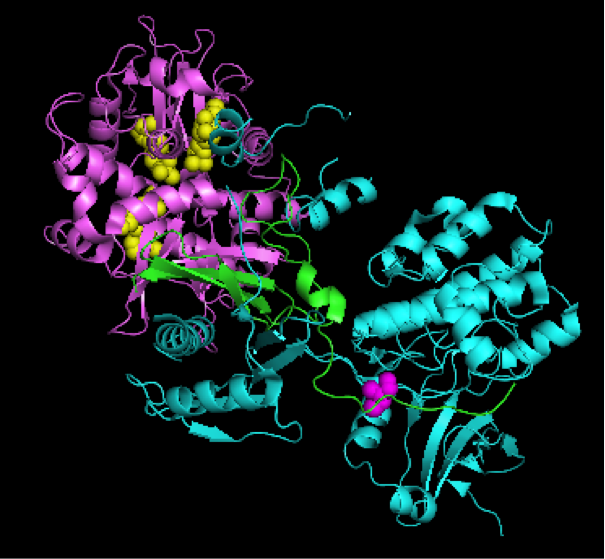
AMPK: The Master Metabolic Regulator that’s Activated by Exercise
Written by Invictus member Dr. Irene Tobias
Have you ever wondered what molecules are involved in your body’s metabolic response to exercise? What turns on the processes of breaking down your energy reserves so you can rapidly fuel your high intensity workouts? What primes your muscles to receive nutrients in the post-workout ‘Window of Gainz’? The molecule known as AMPK is one of your body’s key metabolic regulators and is responsible for all of these activities and much more!
What is AMPK?
AMPK is an enzyme, a protein that performs chemical reactions. AMPK’s full name is 5’-AMP-activated protein Kinase. A kinase is an enzyme that transfers a phosphate ion to another protein, a reaction known as phosphorylation that acts as a biomolecular “on/off switch”, turning the activity of that protein either on or off. Many steps of phosphorylation occur between different proteins communicating to one another in a “cell-signaling cascade”. These signals take an input (such as a hormone, drug or exercise) and can induce any number of outcomes including cell growth, cell death, energy breakdown, energy storage or turning on specific genes for expression. Ultimately, cell signaling is required for all of the physiological processes that we perform as organisms and is key to how we adapt in training to become stronger, faster and fitter.
How does AMPK get activated by exercise?
Adenosine Mono-Phosphate (AMP) is a by-product of ATP breakdown, our cellular energy currency. When we exercise, we start rapidly burning ATP molecules to fuel our muscle contractions. ATP breakdown causes the build-up of AMP molecules. As its name implies, AMPK is activated by AMP. Once AMP molecules bind to the enzyme, AMPK gets turned on and starts performing its phosphorylation reactions on many other protein targets (known as substrates) in order to acutely respond to the metabolic situation at hand.
What does AMPK do in response to exercise?
AMPK has many substrates and turns on and off several downstream signaling pathways once it gets activated, some with short-term immediate effects and some with more long term adaptation effects.
Some of its principle targets are the enzymes responsible for building fatty acid chains and glycogen, two types of molecules where we store energy. The phosphorylation of these enzymes by AMPK has the effect of turning them off, stopping the process of fatty acid and glycogen synthesis. With the breaks put on the synthesis reactions, the reverse reactions can then proceed, allowing us to break down fatty acids and glycogen for immediate energy expenditure.
AMPK also turns on enzymes that are part of the insulin signaling pathway. This allows our muscle cells to become more insulin-sensitive through exercise and primes them for the uptake of glucose and amino acids from the blood stream. Thus, AMPK is directly responsible for what some call the “Window of Gainz” or the post-workout anabolic window, the hour or two after training when your muscle cells can take in the maximum amount of nutrients from the bloodstream.
Interest in AMPK for Improved Aging and Human Performance
Given all of the important things that AMPK does, it’s not too surprising that it is a hot topic of interest in biomedical research these days. AMPK has been found to be a target of Metformin, a drug that has long been used as an effective treatment for Type II diabetes. Metformin is also now being studied as a treatment to improve aging. Thus, activating AMPK can be beneficial for treating Type II diabetes and for aging better. Which makes sense, as exercise activates AMPK naturally and is an even more effective treatment for diabetes and aging than Metformin.
Other drugs that were designed to activate AMPK have shown performance-enhancing effects on the aerobic endurance of untrained mice. Such drugs are now included on the lists of banned substances for competitions.
Research on AMPK in Athletes
Our lab is currently studying AMPK in human muscle tissue, specifically looking at the question of how it behaves differently in different muscle fiber types (i.e. slow-twitch versus fast twitch, see post on MHCs and fiber type). We also aim to eventually start studying how it may differ in different populations of athletes who train for different capacities such as strictly endurance, strictly strength and power, or things like CrossFit and MMA that train all areas of fitness. Answering these questions will help us better understand this enzyme and how it contributes to physiological adaptations in humans.
AMPK does a lot for us- think about it next time you find that extra kick of energy in the middle of a workout or are sipping on your post-workout protein shake!
Dr. Irene Tobias is a biochemist who works with Dr. Andy Galpin on molecular exercise physiology research. Dr. Galpin is a Kinesiology Professor at Cal State Fullerton, an expert in muscle physiology and its applications to training, frequent guest on several podcasts including Barbell Shrugged, and a researcher of human performance at the cellular and molecular levels. He will be speaking at Invictus Downtown on June 24th from 12 PM – 2 PM on “Genetics vs Training: What Determines Your Performance.” This talk is free and open to the public! We welcome you to come and learn more about muscle physiology and cutting edge research on human performance. Please also come armed with questions as we will allow ample time for Q&A and open discussion.
Also Check Out…
Muscle Contraction And A Really Cool Protein Called Myosin